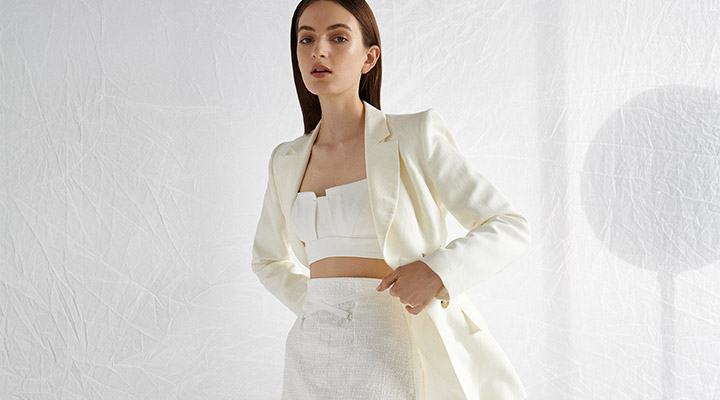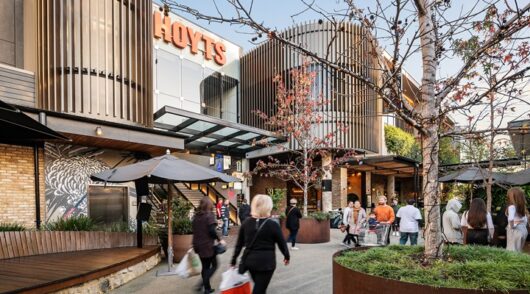‘Tis the season to be merry, but it’s also a time for efficient, inspiring retail experiences. This festive season, iconic Australian womenswear retailer Cue is tapping into customers’ needs for connection and convenience through its virtual styling sessions and multichannel wishlists.
“I think everyone’s feeling busier than they ever have in their lives, so the flexibility of on- and off-line and those two solutions really make a lot of sense,” Cue CIO Shane Lenton told Inside Retail. “And if the customer is in-store, their buying intent is much higher now than it was in years gone by.”
Combining human connection and convenience
While Cue is continuing to experience online growth and is tracking up by 20 per cent from this time last year, it’s clear that now that restrictions have lifted, customers still have a real desire to spend time in physical stores, observed Lenton.
At the height of the pandemic last year, Cue shifted its styling sessions to online, where customers could make a booking to chat with an expert stylist to chat about their wardrobe, the latest trends and potential purchases. Interestingly, the retailer has seen conversion rates of more than 60 per cent from virtual styling sessions.
“Ultimately a big part of it is people wanting human connection. I think with an increasing customer demand for online shopping when people are making important decisions, customers want to have conversations with an experienced stylist,” explained Lenton.
“It’s that customer who is online and also wants to connect with someone in-store at the same time. They can make a booking and know that they’ve got some time set aside with them.”
Cue worked with the innovative digital platformBrauz to deliver these hyper-personalised solutions. Brauz CEO and founder Lee Hardham has observed the success of these styling sessions with several retailers in the industry.
“We’re seeing from retailers across the board that during these stylist sessions, the average order value is five to six times that of regular online or in-store customers. We’re definitely seeing a highly engaged customer that’s ready to buy, which is fantastic,” he said.
Offering on- and off-line wishlists
‘Tis the season for looking fabulous and Cue has its customers covered with their on- and off-line wishlists. If the shopper isn’t quite ready to buy an item, she can add it to her wishlist, so Cue can send her alerts when it’s on sale, or low in stock, tapping into that feeling of FOMO (otherwise known as “fear of missing out”). Recently, a new updated feature of the wishlists has been the ability to inform customers of when sold-out items are back in stock.
That same concept is also available in physical stores and works particularly well at the end of virtual styling sessions if certain purchases aren’t made. Lenton describes the offline wishlist as being a “game changer” for physical retail. Traditionally, if a customer isn’t quite ready to buy an item in-store, nothing happens and they leave, while the retailer hopes they took a photo of the dress or swing tag. But now staff can add these products to the customers’ wishlists. Suddenly, there’s a new opportunity to acquire a customer in-store, said Lenton.
“We’re seeing a lot of sign-ups. Usually in physical retail, a sign-up only happens during a transaction, but now we’re seeing staff members have a conversation with the customer when they’re not quite ready to buy,” explained Lenton. “It’s an opportunity to say, ‘Hey, let me add these items to your wishlist. You’ll receive an email with these items and we will let you know if anything in your wishlist is almost sold out or if it goes on sale’.”
Additionally, these wishlists can also be shared with family, friends and loved ones who may need a hint when it comes to shopping for presents. After all, according to Emarsys’ new All I Want for Christmas report, some of the biggest pain points for customers during the festive season include guessing what people want (38 per cent) and buying an item for the sake of it which won’t be appreciated (29 per cent). On the flipside, consumers prefer to be told what gift to buy (32 per cent) and want to be more thoughtful with their gift choices this Christmas (31 per cent).
At its heart, wishlists are all about offering customers the same hyper personalised experiences they have now come to expect from the rest of their lives when interacting with brands from Netflix to Spotify.
“Personalisation isn’t something that retailers are just considering anymore. It’s actually a part of the retail journey and it’s something that just needs to be done. It’s actually a priority within their business. It’s really about meeting customers where they are and what their expectations are,” said Hardham.
To find out how you can market to your customers this festive season, visit: https://emarsys.com/learn/blog/holiday-shopping-stats-2021/







